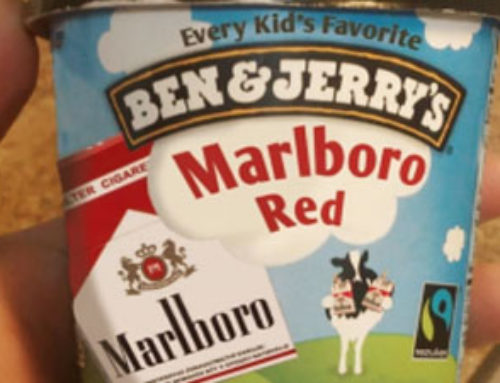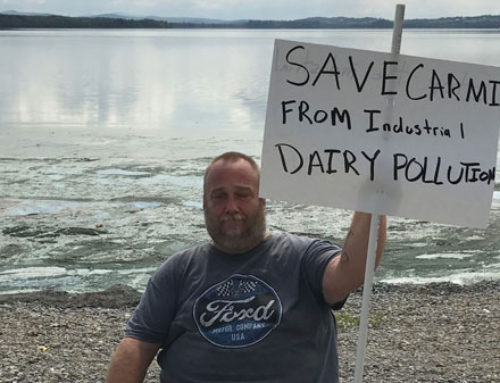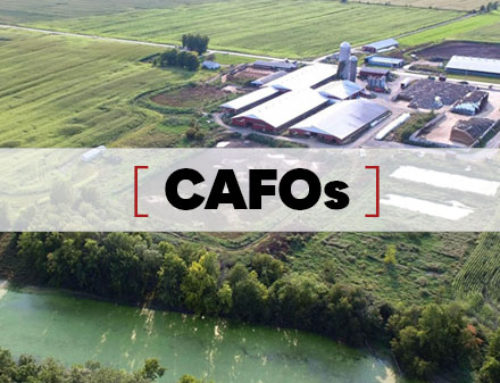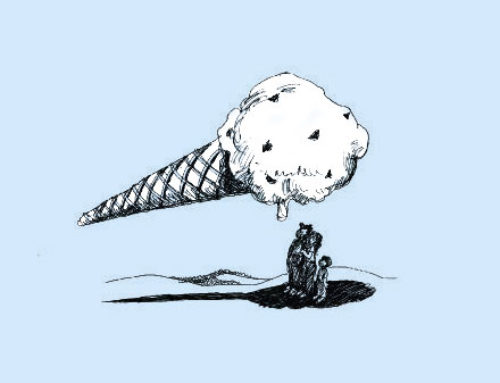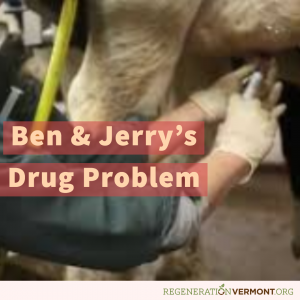 The dairy supplier to Ben & Jerry’s, which relies largely on milk produced by large, concentrated animal feeding operations (CAFOs), continues to process loads that are classified by state officials as being in violation of strict antibiotic residue limits. According to documents recently obtained by Regeneration Vermont from the Vermont Agency of Agriculture, there have been at least two antibiotic-contaminated milk loads picked-up, processed and sold to the public through the St. Albans Cooperative Creamery in the last year.
The dairy supplier to Ben & Jerry’s, which relies largely on milk produced by large, concentrated animal feeding operations (CAFOs), continues to process loads that are classified by state officials as being in violation of strict antibiotic residue limits. According to documents recently obtained by Regeneration Vermont from the Vermont Agency of Agriculture, there have been at least two antibiotic-contaminated milk loads picked-up, processed and sold to the public through the St. Albans Cooperative Creamery in the last year.
The St. Albans Cooperative Creamery, now known as DFA, Inc., after the Kansas-based dairy giant bought them earlier this year, supplies Ben & Jerry’s with its dairy ingredients. Ben & Jerry’s makes claims about getting its milk from “Caring Dairies,” a program of mild reforms that has about 70 Vermont dairies enrolled. But the milk from these farms is not segregated from any other milk picked-up and processed by DFA, which should be a pretty good indication of how much Ben & Jerry’s values the difference.
One thing is for sure, Ben & Jerry’s dairy supply is far from organic. The several hundred farms that supply DFA’s Vermont plant are reliant on GMO corn for feed, almost all of it pre-treated with neonicotinoids, the controversial class of insecticides that are threatening pollinators, as well as routine doses of pesticides (glyphosate and atrazine), climate-busting fertilizers, and antibiotics.
In 2018, the Organic Consumers Association (OCA) sued Ben & Jerry’s in a Washington, D.C. Superior Court, claiming that the ice cream corporation was engaged in false and misleading labeling and marketing of its products. The suit cited results of the testing of several Ben & Jerry’s ice cream products that showed the presence of Monsanto/Bayer’s glyphosate.
The suit also contrasted Ben & Jerry’s claims of environmental concern with the realities of its farm suppliers’ role in Vermont’s water quality crisis, estimated by state officials to be predominantly caused by the phosphorus-rich runoff from the state’s CAFO dairies, many of which supply Ben & Jerry’s.
OCA also contrasted Ben & Jerry’s claims of deriving milk from “happy cows” and “caring dairies” with the reality of the confinement/concentrated conditions, routine use of antibiotics, and decreasing lifespan of cows warehoused on these farms.
While the suit is currently in mediation after Ben & Jerry’s motion to dismiss it was rejected by the Superior Court, and could be heading to trial, documents filed by Unilever’s attorney’s, the parent multinational corporation of Ben & Jerry’s, have already shown how flimsy and unenforceable much of its “Caring Dairy” program remains.
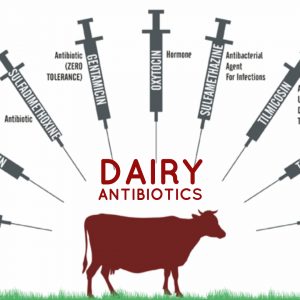 In court filings, for example, Ben & Jerry’s has admitted that it does not control its milk supply, relying on whatever milk is collected and comingled by its supplier, DFA, and that any claims of “caring dairies” and “happy cows” are merely “beliefs and aspirations,” and “not fact-based promises.”
In court filings, for example, Ben & Jerry’s has admitted that it does not control its milk supply, relying on whatever milk is collected and comingled by its supplier, DFA, and that any claims of “caring dairies” and “happy cows” are merely “beliefs and aspirations,” and “not fact-based promises.”
Or, like the suit alleges: deception.
Unfortunately, the weakest aspect of Ben & Jerry’s “Caring Dairy” program is its “aspirational” regulation of on-farm antibiotics. The program is divided into three tiers: basic, silver and gold. Antibiotics monitoring or enforcement aren’t even mentioned at the basic and silver levels, and at the gold level it merely calls for the farms to “keep a record” of antibiotic treatments.
There’s no mention of reduction as a goal, merely keeping track of usage, despite the fact that agricultural uses of antibiotics have been identified as the leading cause of the rise of antimicrobial resistant bacteria, a threat that the World Health Organization calls “one of the biggest threats to global health, food security, and development today.”
But what about these antibiotic records that only 20 of the 70-plus participating “Caring Dairy” farms – those qualifying for “gold” — are keeping? Regeneration Vermont requested these records from both Ben & Jerry’s and the private auditing firm it hired, Where Food Comes From, and both declined to release them.
It’s this kind of secrecy, coupled with a complete lack of a plan for the reduction in on-farm antibiotics usage, that allows the drug use to run rampant on the increasingly cramped, pathogen-rich confinement farms that dominate the Ben & Jerry’s dairy supply chain.
The most recent data obtained by Regeneration Vermont from the VT Ag Agency showed dozens of antibiotic violations statewide over the last couple of years, with many not being detected until the milk was already processed and sold to the public.
Last November, a Middlebury, Vermont farm that ships to what is now DFA was cited for an antibiotics residue violation that went undetected before processing and presumed consumption. According to VT Ag Agency officials, this happens when the milk from a violating farm is comingled on the same truck with milk from other farms that are below allowable residue limits, thus bringing the entirety of the load within limits. The offending farm’s milk isn’t detected until later when the individual samples from each farm’s pick-up are tested at the processor’s labs, tests that can take weeks to complete, longer than the milk sticks around the plant.
“Do not know,” is how the farmer responded to the cause of the violation on the Ag Agency’s “Antibiotic Residue Incident Response Form, while also noting that they thought they had milked all “treated cows into a pail” to be discarded.
Similarly, in May of this year, a New Haven farm that also ships to DFA was found to have both violated antibiotic residue regulations and had its milk processed and, presumably, consumed. Again, the farm wasn’t sure how the violation occurred but pointed to “a fresh cows (sic) that was purchased and don’t know if she was dry treated but was at least three days from calving.”
Ben & Jerry’s has a drug problem because the industrial dairy supply that it relies upon has an antibiotics problem, which is why organizations like the Organic Consumers Association and Regeneration Vermont have been campaigning to convince them to transition away from CAFO-dominated dairying and towards the regenerative organic alternatives. In other words, Ben & Jerry’s should be practicing what it’s been preaching and put more than “aspirations and beliefs” in its claims and programs, especially when it comes to an issue as important as antibiotic residues in the food supply.
— M. Colby
